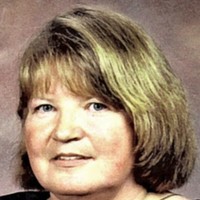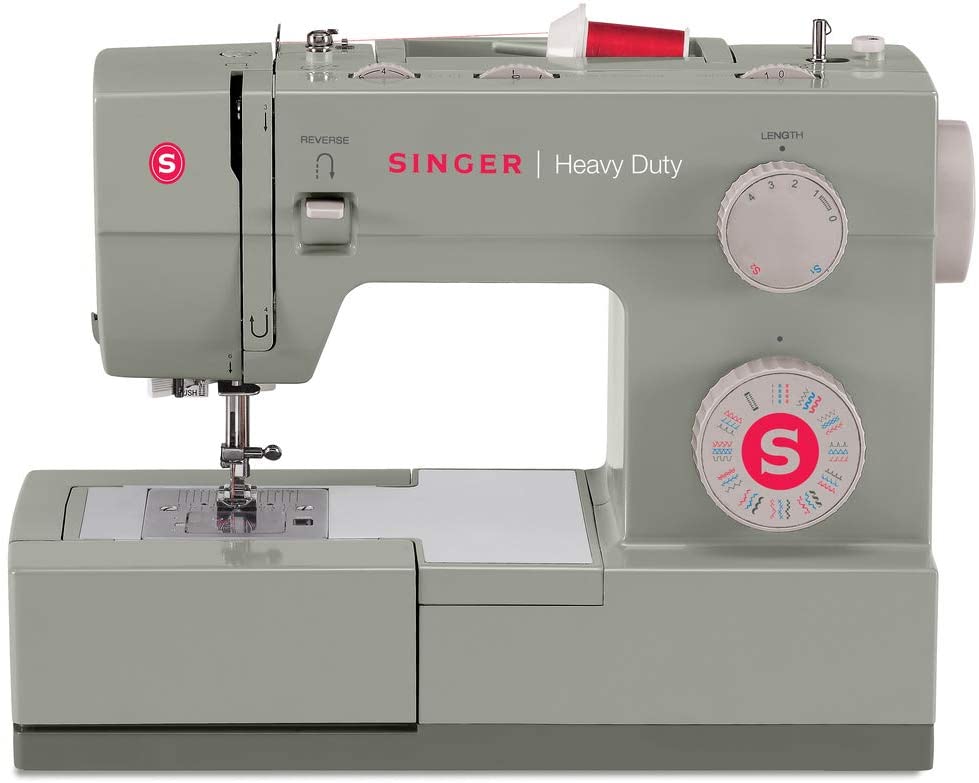With its iconic medium-gray industrial design, no sewer will mistake any SINGER Heavy-Duty sewing machines with its lighter-weight competitors. There are no pastel colors, no cute names or slogans. This line of sewing machines is meant for serious sewers.
Add to those qualities an all-metal frame, stitch selection dial rather than ‘press here’ screens, and a stainless-steel plate, and any user should expect many years of workhorse capability. With all this muscle, the Heavy-Duty line still delivers up-to-date features and functions.
The SINGER Heavy-Duty 4452 holds its unique place within the line with 32 built-in stitches and 110 stitch applications, a top drop-in bobbin, and its 1-step buttonholer. Want to sew a tent then decorate its doorway with flowers? Done and done. A variety of YouTube classes and the SINGER Sewing Assistant App make learning easy and free.
Below is a fair and honest review. It’s based on my own 30 years sewing experience and that of other pros, instructors, and home sewers.
Our Rating = 4.8 / 5
For home sewing, the SINGER Heavy-Duty 4452 earns 4.8 out of a possible 5.0
In this article:
Is the SINGER Heavy-Duty 4452 right for you?
The SINGER Heavy-Duty 4452 is a good choice for intermediate-level home sewers. The heavy-duty construction means that a wide variety of projects are easily within reach with the machine. Whether you plan to sew a christening gown, a man’s suit, or a sleeping bag, this machine is worth seriously considering.
The SINGER Heavy-Duty 4452 reviewed: an honest list of features (and flaws)
Here are the features I considered when rating this sewing machine.
What to love:
- The machine comes with 110 stitch applications and 32 built-in stitches. These include a variety of straight, zigzag, hemming, and decorative that will likely meet any home sewer’s needs for years to come.
- The high-speed switching at up to 1,100 stitches per minute, 60 percent stronger motor and 3 needle positions make sewing less chore-like and more artistic fantasy fulfillment. Most sewing machines sew at less than half this speed. If you’re switching machines, you’ll find these features very handy.
- The 4452 features a 1-step buttonhole feature. All you need to do to achieve the perfect buttonhole size is to slip the button into the device. You’ll get an ideal buttonhole every time.
- The interior metal frame and the stainless-steel bedframe of the 4452 provide exceptional strength and durability.
- The 4452 has a free-arm feature. When you remove the bed to uncover the free arm, you’ll find an accessory storage holder.
- A drop-feed lever lets you control the placement of the machine’s feed teeth. This is especially useful in quilting.
- The built-in needle threading feature allows for less eye strain and easier upper threading. Just follow the path to thread the 4452 perfectly every time.
- The drop-in bobbin is more accessible to mount than a front-loading bobbin. It’s also simpler to monitor the bobbin’s fill line through a clear plastic cover.
- An extra-high presser foot lift lets you control how high or low presser foot position for each fabric weight and thickness.
- Adjustable stitch length and width (up to 6mm) puts you in complete control of stitch appearance.
- The 4452 has a real reverse stitch lever to use with any stitch to change shapes and contours.
- Seven snap-on presser feet make changing from one to another easy and foolproof.
- The 4452’s dimensions are 15.5 x 6.25 x 12 inches, and it weighs 15.71 pounds.
- The 4452 has the standard SINGER 30-day return policy, 1/5/25-year warranties.
But watch out for:
- Some users have had difficulty learning the basics of threading, tension control, and the reverse stitching mechanism.
What others are saying about the SINGER Heavy-Duty 4452
From the manufacturer:
“A heavy-duty metal frame and powerful motor make this machine a true workhorse.” SINGER
What the pros say:
“This mechanical sewing machine sews very quickly and is very easy to set up and to use. It is a good fit for both the beginner and the more advanced sewist.” Sewing-machine-ratings.com
“The Singer 4452 may not be the most elegant or sleek machine out there, but it gets the job done.” Sewnstudio.com“
“If you’re looking for a machine which supports free motion quilting, you’ll be happy to know that the feed dogs can be lowered quite easily, with a lever. Sewing multiple layers, such as in quilts or winter clothing, is not off the table either.” Sewingmag.org
Consumer feedback:
| Source | Av. Score | Last checked | No. Ratings |
| Amazon | 4.6 out of 5 | 26 March 2021 | 3784 |
| JOANN Stores | 3.7 out of 5 | 26 March 2021 | 3 |
| eBay | 4.6 out of 5 | 26 March 2021 | 30 |
What to expect when you buy
The following are included with the 4452:
- General-purpose foot, even feed/walking foot, non-stick foot, zipper foot, buttonhole foot, button sewing foot
- Clearance plate for sewing thick seams
- Edge/quilting Guide
- 5-Pack of size 16 needles
- Bobbins
- Spool caps, auxiliary spool pin, and spool pin felt,
- Screwdriver
- Seam ripper/lint brush
- Soft dust cover
Alternatives to the SINGER Heavy-Duty 4452
The heavy-duty line produced by SINGER includes machines with widely varying capabilities. In the interest of comparing like-to-like, here are three alternative selections within the line.

SINGER Heavy-Duty 4411 Sewing Machine
The Heavy-Duty entry model has 97 stitch applications, a top drop-in bobbin, and its 1-step buttonholer.

SINGER Heavy-Duty 4423 Sewing Machine
A step up from the 4423, this model has 32 built-in stitches and a fully automatic buttonholer.

SINGER Heavy-Duty 6800C Sewing Machine
The 6800C has the sturdiness of the SINGER line of heavy-duty machines with the features of an up-market computerized machine.
In a nutshell
The SINGER Heavy-Duty 4452 sewing machine is a fine choice for most sewers. The 4452 will provide a great selection of stitches, a long product life, and an easy learning curve for most home sewers.


